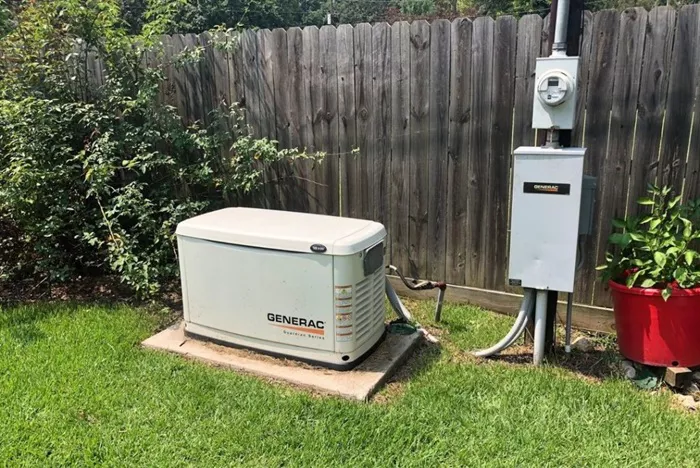What is a Good Wattage for a Home Generator?
Choosing the right wattage for a home generator is essential to ensure you have a reliable power source during outages, particularly in the event of severe weather, natural disasters, or other unforeseen circumstances. The correct wattage ensures that you can keep your essential appliances running without overloading the generator, which could lead to malfunctions or safety hazards. Factors such as the size of your home, the number of people living there, and the specific appliances you need to power all influence the wattage requirements of your generator. Understanding your power needs will help you select the appropriate generator to maintain comfort and safety during a power outage.
Understanding Wattage
There are two key components to consider when evaluating the wattage requirements of a home generator:
Running Watts (Continuous Power)
Running watts are the continuous amount of power your generator provides to keep appliances running. This includes all the electrical devices that need constant energy to function, such as lights, refrigerators, and televisions.
Starting Watts (Surge Power)
Starting watts, or surge power, is the extra energy required to start appliances that have motors, like refrigerators, air conditioners, and pumps. These devices typically require a higher initial power surge when turned on, but once they are running, they return to their regular running wattage.
Calculating Your Power Needs
To determine the right wattage for your home generator, follow these simple steps:
List Essential Appliances
Identify all the appliances you would like to power during an outage. These might include lights, heating and cooling systems, refrigerators, sump pumps, medical equipment, and more.
Determine Running Watts
Check the wattage rating for each appliance. This information is typically found on the appliance’s label or in the owner’s manual. Add up the running wattage for all the appliances that you plan to use simultaneously.
Account for Starting Watts
Appliances with motors, such as refrigerators, air conditioners, or well pumps, need additional starting watts. For each of these appliances, check the surge power requirement and add it to your total wattage calculation.
Total Wattage Requirement
Add up all the running watts and the additional starting watts for your chosen appliances. This total wattage requirement will give you an idea of the minimum wattage your generator should provide.
Common Wattage Recommendations
Depending on the size of your home and your energy needs, different wattage capacities are suitable:
Small Homes or Apartments (1-2 people)
A generator in the range of 3,000 to 5,000 watts is usually sufficient for basic essentials such as lighting, a refrigerator, and a few small appliances like a microwave or a coffee maker.
Medium-Sized Homes (3-4 people)
A generator with 5,000 to 7,500 watts is ideal for homes with more electrical devices. In addition to lights and a refrigerator, you can power larger appliances such as a sump pump, a heating system, and a washing machine.
Large Homes (5+ people)
For larger homes or households with higher power demands, consider a generator in the range of 7,500 to 10,000 watts or higher. This size will cover essential appliances and more, including central air conditioning, electric heating systems, and multiple large kitchen appliances.
Portable vs. Standby Generators
Portable Generators
Portable generators offer flexibility and can be moved as needed, typically with a wattage range from 1,000 to 7,500 watts. These are ideal for short-term power needs, such as during a power outage that might last a few hours or days. Portable generators are typically used to power essential appliances like lights, refrigerators, and a small heater.
Standby Generators
Standby generators, also known as whole-house generators, are permanently installed outside the home and are connected to your electrical system. They typically have higher wattage capacities, ranging from 5,000 to 20,000 watts or more, and are capable of powering an entire home during an extended outage.
Safety Considerations
Using a home generator requires careful attention to safety. Here are some essential safety tips:
Proper Ventilation: Always operate your generator in an open, well-ventilated area to avoid carbon monoxide poisoning. Never run a generator indoors or in an enclosed space like a garage.
Fuel Storage: Store fuel in approved containers and away from living spaces. Follow all manufacturer guidelines for safe fuel handling and storage.
Maintenance: Regularly maintain your generator to ensure it operates efficiently. This includes changing the oil, cleaning the filters, and checking the fuel levels.
Avoid Overloading: Don’t exceed the generator’s wattage capacity. Overloading can cause the generator to overheat or damage the appliances being powered.
Conclusion
Choosing the right wattage for your home generator is essential for reliable power during an outage. By understanding your power needs and calculating the wattage for essential appliances, you can make an informed decision about the best generator for your home. Whether you choose a portable or standby generator, selecting the correct wattage ensures that your home stays powered efficiently and safely. Don’t forget to consider safety precautions and regular maintenance to extend the life of your generator and keep your household protected during power disruptions.

